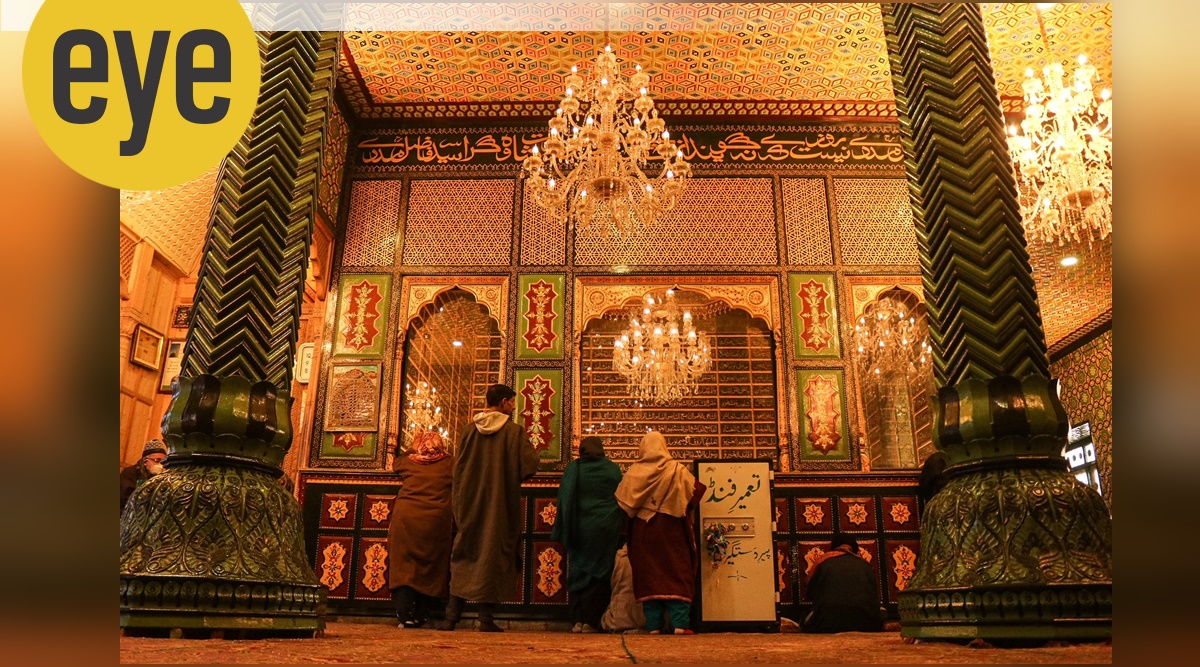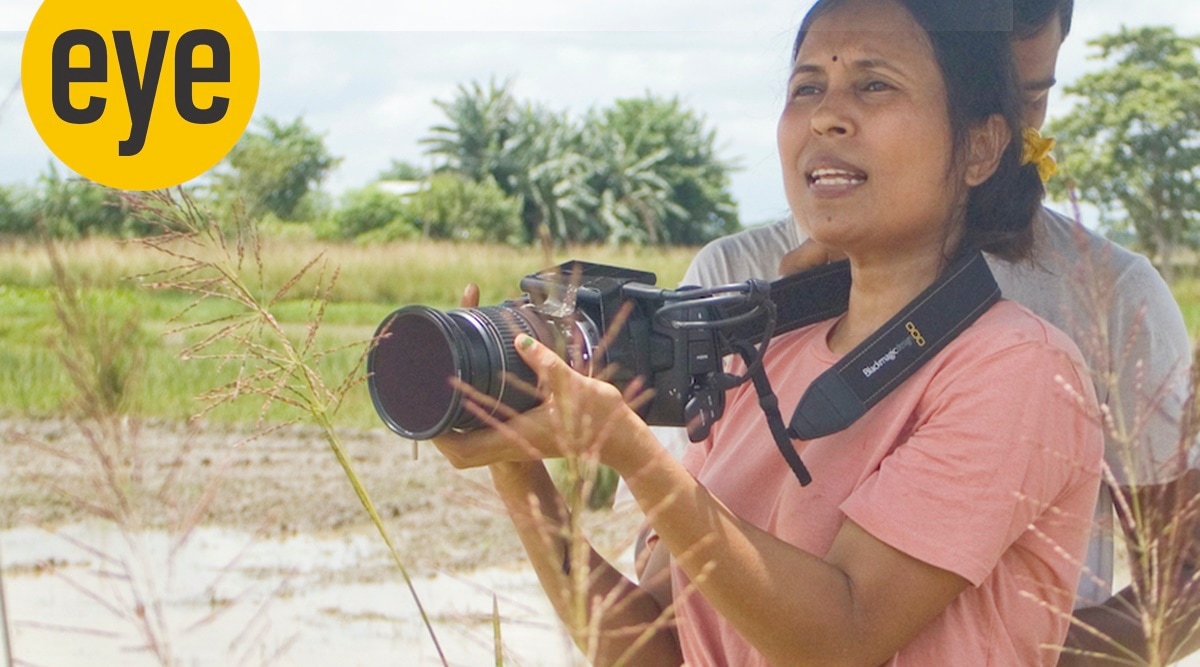Latest Comment
Post Comment
Read Comments
 Orhan Pamuk won the Nobel Prize for Literature in 2006 (Source: Orhan Pamuk)
Orhan Pamuk won the Nobel Prize for Literature in 2006 (Source: Orhan Pamuk)The yellow journal that he holds close to the computer screen has an illustration of a sandstone fort, sketched in detail. Below it, in a neat hand in Turkish, Orhan Pamuk has written about his visit to Amber Fort in Jaipur in 2011. He had been speaking of art and influences and how it had once been the vocation he had dreamt of, when Turkey’s foremost cultural ambassador to the world stops midway to rifle through his desk and pick out the diary. For over 15 years, he has maintained illustrated journals, detailing his travels and artistic impressions of places and events. Some of these have just been published as Memories of Distant Mountains, an art book in Turkish and French. The entry on Amber Fort is part of the book, but it also has resonance with his newest novel, Nights of Plague (Penguin Hamish Hamilton, Rs 799), that releases in India this week. It was, the writer says, the impression that guided his imagination of the pink-stone Arkaz Castle on the fictional Ottoman island of Mingheria, a “pearl of the Eastern Mediterranean Sea”, between Istanbul and Alexandria, and the site of action in his novel.
The story of one woman for whom Partition was a memory she lived with
 Chandana Dutta and her husband Ajit Kumar Dutta at their wedding in 1956
Chandana Dutta and her husband Ajit Kumar Dutta at their wedding in 1956
In the summer of 1947, when Chandana Dutta was 16 years old, she fled Dhaka. She packed one sari, a few books, and a sewing machine. She left to join her mother and sisters in Kolkata, 200 miles away, leaving behind her father, a proud professor at the University of Dhaka, who insisted on staying.
READ MORE
Did you know papier-mâché could be used on walls and ceilings?
 The ornate central hall of the Peer Dastgeer Sahib’s Khanqah-cum-mosque in Old Srinagar. (Photo credit: Intach-Heritage Craft & Community Division)
The ornate central hall of the Peer Dastgeer Sahib’s Khanqah-cum-mosque in Old Srinagar. (Photo credit: Intach-Heritage Craft & Community Division)
Srinagar-based Mohammed Yousuf Lone was in Class IX when he won the first prize for a painting of a rice field. Later, this talent would win the arts graduate a government-sponsored training at Sir JJ School of Art, Mumbai. Lone returned to join School of Designs, a Kashmir handicrafts initiative from the ’50s, as assistant designer. It’s here that he was inspired by head craftsman Ali Mohd Banka, who practised papier-mâché. Lone soon found himself veering towards the technique in his spare time, working on miniatures, Mughal figures and flowers. Today, the 90-year-old national-award winner is the teacher who taught his own family and many others to preserve the art of papier-mâché in Kashmir.
READ MORE
Antara Nandy on her playback debut in Maniratnam’s Ponniyin Selvan 1 with the AR Rahman song, Alaikadal
 Antara Nandy with AR Rahman
Antara Nandy with AR Rahman
For the last two-and-a-half years, Antara Nandy, 22, has been visiting composer AR Rahman’s music studios in Chennai’s Kodambakkam – the nerve centre of the Tamil film industry – to record scratches for the Oscar winner.
Despite their derogatory implication — scratches are recordings that are scratched and replaced — they are significant in the film-music business. At any given time, about 10 or more scratches are recorded by as many singers before one of them is actually used in a film. “I didn’t mind it though. Singing scratches allows me to learn a lot – the process of recording, diction for so many languages, how to modulate one’s voice and match it with the actor on screen, etc. Besides, these are Rahman sir’s scratches, so I knew I could learn a lot,” says Pune-based Nandy, on a telephone call from Chennai, where she is back in Kodambakkam, to record more scratches.
READ MORE
What to do when dogs run free
 Once a pack goes into hunting mode, because they are hungry or have pups to feed, there is no looking back for the victim (Photo credit: Ranjit Lal)
Once a pack goes into hunting mode, because they are hungry or have pups to feed, there is no looking back for the victim (Photo credit: Ranjit Lal)
Out in the wild, where they run free, the canids, be they the painted dogs (wild dogs) of Africa, dholes (red dogs) of India, or the wolves of North America, Eurasia and India together, form the most fearsome of predatory animals around. The hunting success rate of African wild dogs is around 67 per cent (though dragonflies beat them hollow with around a 97 per cent success rate) far surpassing that of the big cats. They work in teams, with each team member being assigned a particular role and they gun for the weak, very young and vulnerable – ironically, strengthening the gene pool of their victims because only the fittest get away. They’ve been persecuted to the edge of extinction since time immemorial because they scare us no end and take down our livestock – sheep, goats and cattle. Once a pack goes into hunting mode, whether because they are hungry or have pups to feed, there is no looking back and very little hope for the victim.
READ MORE
How the pandemic influenced filmmaker Rima Das’s latest film
 Rima Das worked on finding an emotional core and developing the characters’ fictional journey
Rima Das worked on finding an emotional core and developing the characters’ fictional journey
THE latest film by Rima Das, Tora’s Husband, marks her return to familiar settings — her neighbourhood in Assam’s Chhaygaon — under unfamiliar circumstances. Restless after being isolated in Mumbai during the first lockdown, when Das returned home in 2020, she spent about a month keenly observing how the lives around her had changed. The humdrum of everyday life was replaced with uncertainty and uneasiness in this small town. Though Das initially started writing it as a family drama, the feature film eventually became an insightful narrative about adapting to new realities as livelihoods were lost and relationships turned sour.
READ MORE




